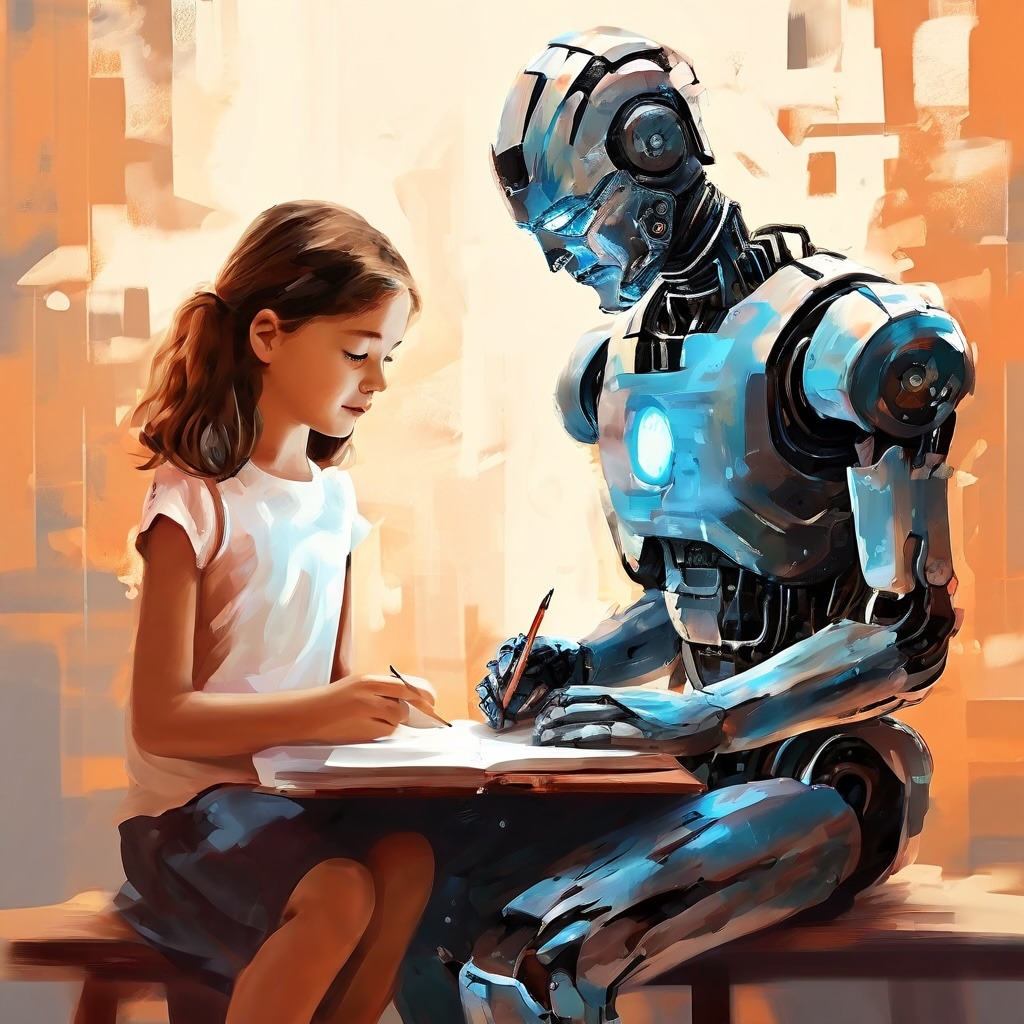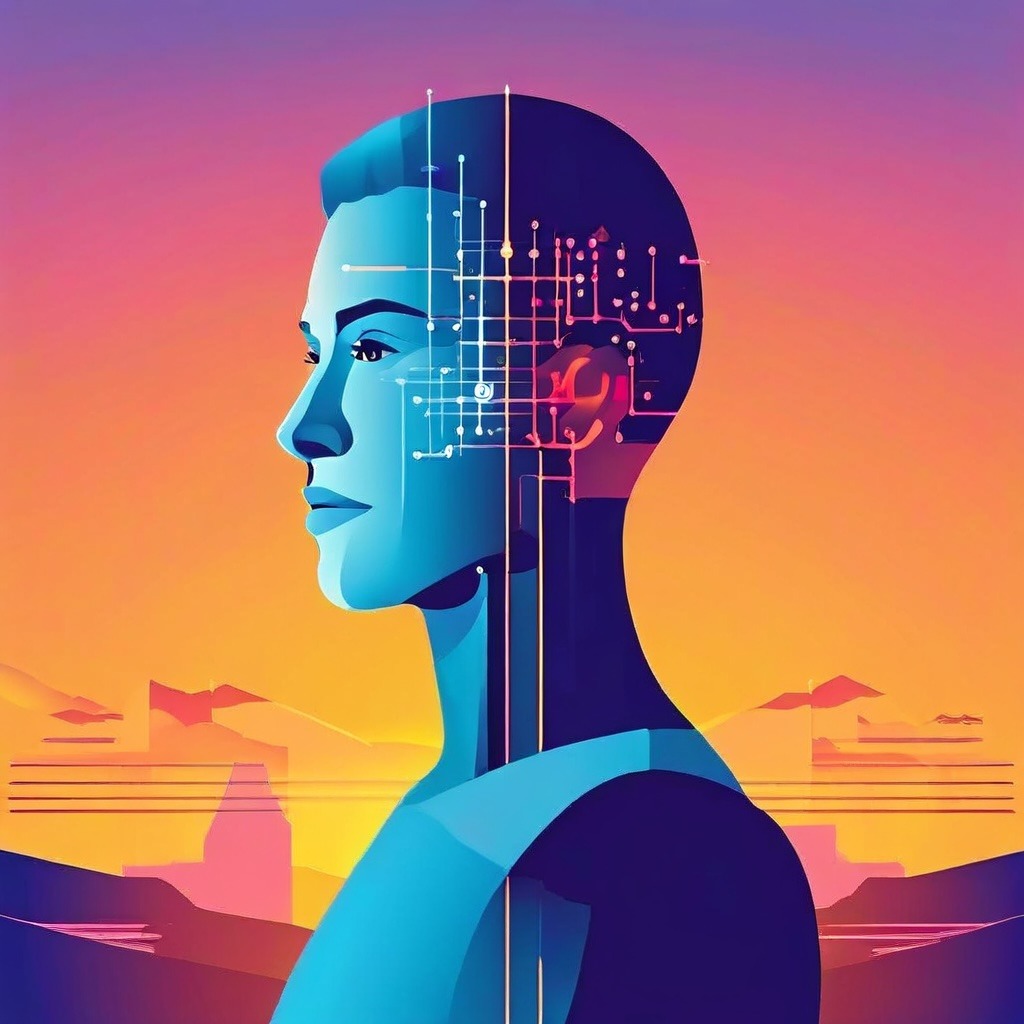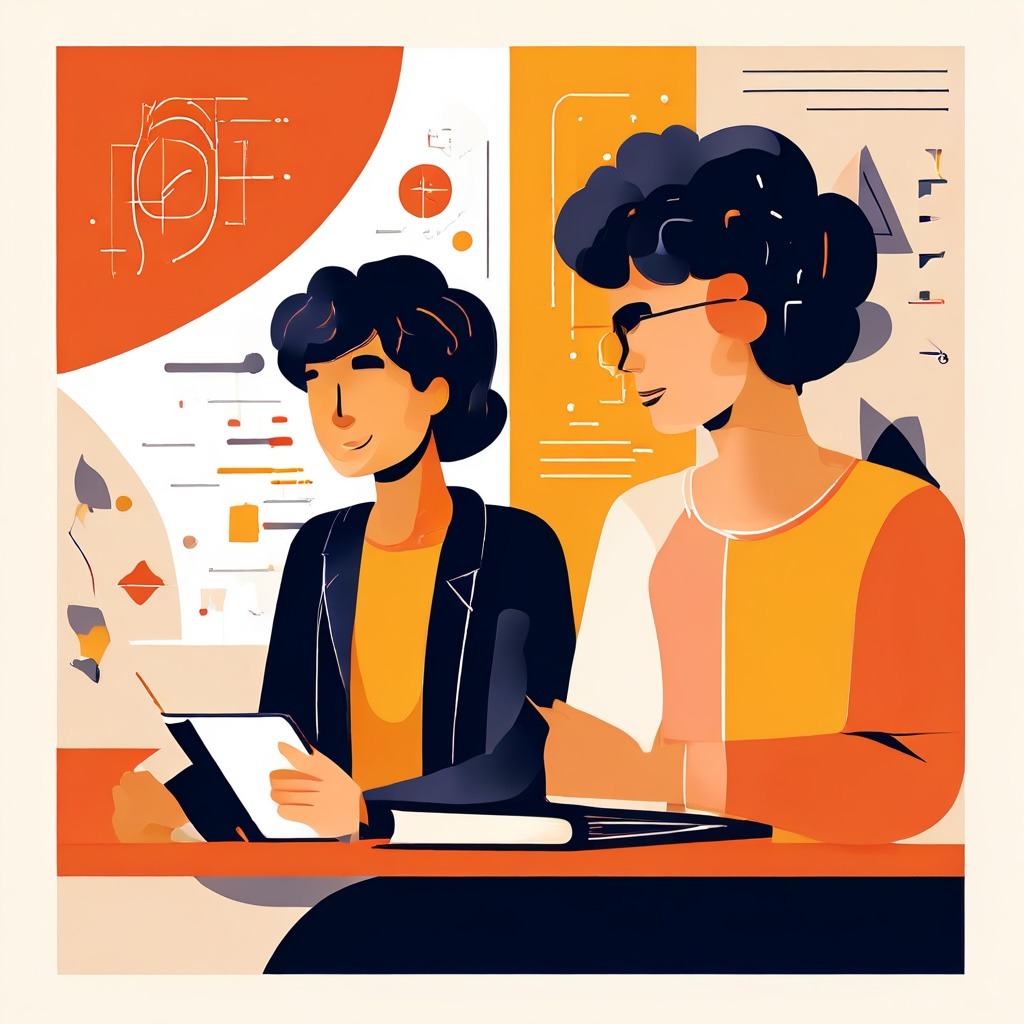As educators, we are always striving to improve our teaching practices and stay updated with the latest educational trends and research. Professional development (PD) is a crucial part of this journey. It not only helps us grow professionally but also enhances our ability to meet our students’ diverse needs. However, traditional PD methods often come with limitations such as time constraints, lack of personalized content, and the challenge of applying new knowledge practically in the classroom. This is where artificial intelligence (AI) steps in, offering innovative solutions to transform our professional development experiences. In this post, I will explore how AI can be leveraged for professional development, sharing insights from my own experience and the potential benefits it can bring to the teaching community.
The Need for Evolving Professional Development
Before we dive into the AI revolution, let’s take a moment to reflect on the current state of professional development (PD) in our field. If you’re like me, you’ve probably attended countless workshops, seminars, and in-service days throughout your career. Some of these experiences have been invaluable, providing us with new strategies, insights, and inspiration to take back to our classrooms. Others… well, let’s just say they’ve left us checking our watches and wondering if that stack of papers to grade might actually be more exciting.
The truth is, traditional PD in education often follows a one-size-fits-all approach. We sit through presentations that may or may not be relevant to our specific needs, grade levels, or subject areas. We’re given generic handouts and expected to somehow translate them into meaningful changes in our diverse classrooms. And let’s not forget the logistical challenges – finding substitute teachers, rearranging schedules, and often traveling long distances for these sessions.
Don’t get me wrong; there’s value in coming together as a community of educators to learn and grow. But in today’s fast-paced, ever-changing educational landscape, we need more. We need personalized, on-demand, and highly relevant professional development opportunities that can keep up with the diverse and evolving needs of our students and our profession.
This is where AI comes into the picture, and trust me, it’s not about replacing us or diminishing the importance of human interaction in our professional growth. Instead, AI is emerging as a powerful tool to enhance, personalize, and streamline our professional development experiences.
Before diving into the AI solutions, it’s essential to understand why our current PD practices need an upgrade. Here are some common challenges we face with traditional professional development:
- One-size-fits-all Approach: Many PD sessions are designed to address general topics, often missing the specific needs and contexts of individual teachers or schools.
- Time Constraints: Balancing teaching responsibilities with PD can be challenging. Finding the time for meaningful and continuous professional growth amidst a packed schedule is tough.
- Limited Interactivity: Traditional PD methods often involve passive learning through lectures and presentations, which may not engage teachers effectively.
- Application Gap: There’s often a gap between learning new concepts in PD sessions and applying them practically in the classroom.
AI has the potential to address these challenges by providing personalized, flexible, and interactive professional development opportunities that are directly applicable to our teaching practices.
My First Steps with AI
My journey into AI-powered professional development started small. I began experimenting with AI-driven tools that offered personalized learning recommendations. These tools analyzed my teaching style, my students’ needs, and the latest educational research to suggest resources, strategies, and even entire lesson plans.
At first, I used these suggestions cautiously, treating them as supplementary materials rather than replacements for my own expertise. But over time, I realized that these AI-generated recommendations were surprisingly insightful. They offered fresh perspectives on familiar topics and introduced me to new ideas I hadn’t considered before.
My First Steps with AI
My journey into AI-powered professional development started small. I began experimenting with AI-driven tools that offered personalized learning recommendations. These tools analyzed my teaching style, my students’ needs, and the latest educational research to suggest resources, strategies, and even entire lesson plans.
At first, I used these suggestions cautiously, treating them as supplementary materials rather than replacements for my own expertise. But over time, I realized that these AI-generated recommendations were surprisingly insightful. They offered fresh perspectives on familiar topics and introduced me to new ideas I hadn’t considered before.
Understanding AI in the Context of Professional Development
Before we explore the specific ways AI is transforming PD, let’s demystify what we mean by “AI” in this context. When I first heard about AI in education, I’ll admit, my mind went straight to sci-fi movies with robots taking over classrooms. But the reality is far less dramatic and far more practical.
In the realm of professional development, AI refers to computer systems that can perform tasks that typically require human intelligence. These tasks include things like analyzing large amounts of data, recognizing patterns, making recommendations, and even engaging in natural language conversations.
Think of AI as a highly intelligent assistant – one that can process vast amounts of information about teaching practices, learning outcomes, and educational research, and then use that knowledge to provide personalized support and guidance to educators like us.
1. Personalized Learning for Teachers
Just as AI can tailor learning experiences for students, it can do the same for teachers. AI-driven platforms can assess our current knowledge and skills, identify areas for improvement, and recommend specific resources or training modules. This personalized approach ensures that we spend our time on the most relevant and impactful learning activities.For example, AI tools like Coursera and Udemy use algorithms to suggest courses based on our interests and previous learning history. These platforms can provide personalized feedback and adjust the difficulty level of the content to match our proficiency, making the learning process more efficient and engaging.
Why AI Matters for Professional Development
Professional development (PD) is vital for teachers to keep up with educational trends, learn new teaching strategies, and improve their skills. Traditionally, PD has involved workshops, seminars, and peer collaboration. However, AI is revolutionizing this landscape by offering more personalized, efficient, and accessible learning opportunities.
Personalized Learning Pathways for Teachers
Remember those one-size-fits-all PD sessions I mentioned earlier? AI is flipping that model on its head. By analyzing our individual teaching styles, subject areas, grade levels, and even our students’ performance data, AI systems can create personalized learning pathways for each educator.
For example, last year, our district implemented an AI-powered PD platform. After completing an initial assessment, the system recommended a series of micro-learning modules tailored to my specific needs as a high school English teacher working with a diverse student population. The modules ranged from advanced differentiation strategies to incorporating multicultural literature effectively.
What struck me was how spot-on these recommendations were. It was as if the system understood my classroom challenges and professional goals better than some of my human mentors had in the past. The ability to access these personalized resources at my own pace, fitting them into my busy schedule, was a game-changer.
Example: AI platforms like Coursera , Khan Academy or Udemy can analyze your progress and learning preferences to suggest courses and materials that align with your professional goals. This personalized approach ensures that you are spending your time on relevant and impactful learning experiences.
Just-in-Time Learning
One of the most exciting applications of AI in professional development is its ability to provide real-time feedback and coaching. AI-powered tools can analyze video recordings of our lessons, providing insights on everything from our questioning techniques to our classroom management strategies.
I was skeptical about this at first – the idea of a computer critiquing my teaching felt a bit unsettling. But when I gave it a try, I was amazed at the depth and nuance of the feedback. The AI tool picked up on patterns in my teaching that I hadn’t even noticed myself. For instance, it pointed out that I tended to call on students in the front of the class more often than those in the back, something I was unconsciously doing.
What’s more, the AI didn’t just point out areas for improvement; it also provided specific, actionable suggestions for enhancing my practice. It recommended research-backed strategies and even linked me to relevant resources and exemplar videos from other teachers.
This kind of immediate, objective feedback has been invaluable in helping me reflect on and refine my teaching practices in real-time, without waiting for formal observations or evaluations.
Example: Imagine you’re about to introduce a new science concept to your students, and you need a quick refresher or some innovative teaching strategies. AI chatbots or virtual assistants can offer real-time guidance, resources, and suggestions, ensuring you’re well-prepared for your lesson.
Interactive and AI-driven Engaging Content Creation
AI is also revolutionizing the way we access and interact with professional development content. Gone are the days of sifting through endless websites or outdated textbooks to find relevant resources. AI-powered platforms can curate and adapt content based on our individual needs and preferences.
For instance, the AI system our school uses learns from my interactions with it. If I spend more time on resources related to project-based learning, it starts to suggest more content in that area. If I struggle with a particular concept, it breaks it down further or presents it in a different format – maybe through a video tutorial or an interactive simulation.
This adaptive approach ensures that we’re always engaging with content that’s relevant, challenging, and aligned with our professional growth goals. It’s like having a personal librarian who not only knows every education resource in existence but also understands exactly what you need and when you need it.
Traditional PD often involves passive learning, but AI can transform this by offering interactive and engaging content. AI-driven platforms can incorporate multimedia elements such as videos, simulations, and interactive quizzes to make learning more engaging and effective.
Example: AI platforms like Edpuzzle use interactive video lessons where you can engage with the content through questions and discussions embedded within the video. This active learning approach can deepen your understanding and retention of new concepts. I have also used Eduaide.AI to create customized lesson plans and discussion prompts. The AI-generated content was high-quality and aligned with my curriculum goals, saving me hours of preparation time. Similarly, Quizizz has helped me create personalized quizzes that adapt to each student’s learning pace, providing instant feedback and insights into their progress.
Virtual Mentoring and Collaboration
As teachers, we know the value of mentorship and peer collaboration. But finding the time and opportunity for these interactions can be challenging, especially in today’s often isolated teaching environments. AI is bridging this gap by facilitating virtual mentoring and collaboration opportunities.
AI-powered platforms can match us with mentors or peers based on our specific needs, experiences, and goals. These systems can analyze our profiles, teaching contexts, and areas of expertise to suggest connections that are likely to be most beneficial.
I’ve personally benefited from this through an AI-facilitated mentoring program. The system matched me with a veteran teacher from another state who had expertise in an area I was trying to develop – incorporating more technology into my English curriculum. Our virtual mentoring sessions, scheduled by the AI based on our availability, have been incredibly valuable. The AI even suggests discussion topics and resources based on our ongoing conversations and shared goals.
Moreover, AI can facilitate more effective collaboration among teachers by identifying common interests or complementary skills. It can suggest potential collaboration opportunities or even help coordinate cross-curricular projects.
Example: Platforms like Edmodo (is discontinued but check THIS for alternatives) or Google Classroom use AI to recommend groups or forums where you can connect with other educators working on similar topics. This collaborative approach can provide a wealth of insights and support. AI-powered virtual coaching platforms like Edthena and TeachFX provide personalized feedback on our teaching practices. These tools use AI to analyze classroom videos and offer insights into areas such as student engagement, instructional strategies, and classroom management.
Data-Driven Decision Making
One of the most powerful aspects of AI in professional development is its ability to analyze vast amounts of data to drive decision-making at both individual and institutional levels.
On an individual level, AI can track our progress over time, identifying trends in our professional growth and suggesting areas where we might need additional support. It can correlate our professional development activities with student outcomes, helping us understand the real-world impact of our learning.
At an institutional level, AI can analyze data from all teachers in a school or district to identify common needs, track the effectiveness of different PD initiatives, and even predict future professional development needs based on emerging trends in education.
In our district, this data-driven approach has led to more targeted and effective professional development offerings. Rather than generic workshops, we now have PD sessions that directly address the most pressing needs identified by the AI analysis.
Example: Tools like IBM Watson Education can analyze thousands of research papers and extract key findings relevant to your area of interest. This can save you time and help you stay informed about the latest educational trends and best practices.
Continuous Learning Opportunities
Traditional professional development often happens in bursts – a workshop here, a conference there. But we all know that effective professional growth is an ongoing process. AI is enabling a shift towards continuous, embedded professional learning.
AI-powered tools can provide bite-sized learning opportunities that fit into our daily routines. For example, I use an AI assistant that sends me daily micro-learning prompts based on my professional goals. These might be quick teaching tips, reflective questions, or links to short articles or videos. It’s a small daily dose of professional development that keeps me engaged and growing throughout the school year.
Moreover, AI can help us apply what we learn in these continuous learning experiences to our daily practice. It can remind us to try out new strategies, reflect on their effectiveness, and make adjustments as needed.
Addressing Diversity and Inclusion
As educators, we’re always striving to create more inclusive learning environments. AI is playing a crucial role in helping us develop the skills and awareness needed to support diverse student populations.
AI-powered professional development platforms can provide personalized training on cultural competency, unconscious bias, and inclusive teaching practices. These systems can adapt their content and approach based on our individual backgrounds, experiences, and the specific demographics of our student populations.
For instance, when our school demographics shifted to include more English Language Learners, the AI system quickly adapted my professional development path to include more resources on ELL strategies and cultural responsiveness.
Simulations and Virtual Practice
One of the most exciting developments I’ve seen is the use of AI-powered simulations for professional development. These simulations allow us to practice challenging scenarios in a safe, virtual environment.
I recently participated in a simulation focused on managing difficult classroom behaviors. The AI-powered system presented me with a virtual classroom of students, each with their own personalities and behaviors. As I interacted with these virtual students, the AI adapted their responses based on my actions, providing a remarkably realistic practice environment.
What’s more, the system provided immediate feedback on my responses, suggesting alternative strategies and highlighting best practices. This kind of hands-on, risk-free practice has been invaluable in helping me develop new skills and confidence in handling challenging situations.
AI-Enhanced Reflective Practice
Reflective practice is a critical component of professional development, allowing us to analyze our teaching practices and identify areas for improvement. AI can support reflective practice by providing data and insights on our classroom interactions and student outcomes.
Example: AI-powered classroom observation tools like Swivl can record and analyze your teaching sessions, offering feedback on various aspects such as student engagement, instructional strategies, and classroom management. This data-driven reflection can help you make informed decisions about your teaching practices.
Automating Administrative Tasks
One of the biggest challenges we face as teachers is managing administrative tasks, which can take up a significant portion of our time. AI can help automate many of these tasks, freeing up time for us to focus on professional development and direct student interaction. Tools like Gradescope use AI to automate grading, providing detailed analytics on student performance. This not only saves time but also offers insights into areas where students may need additional support, allowing us to tailor our teaching strategies accordingly.
Addressing Concerns and Challenges
As I delved deeper into the world of AI in education, I became increasingly aware of the ethical considerations surrounding this technology. Issues like data privacy, bias in algorithms, and the potential for AI to widen the gap between privileged and underprivileged students were all top of mind.
I made a conscious effort to choose AI tools that were transparent about their data collection and usage practices, and I worked to ensure that my students’ data was protected at all times. I also remained vigilant about the potential for bias in AI-generated recommendations, always applying my own judgment and expertise before implementing any suggestions.
Privacy and Data Security
One of the primary concerns with AI-powered professional development is the collection and use of data. As these systems gather information about our teaching practices, professional growth, and even our students’ performance, we need to ensure that this data is handled securely and ethically.
It’s crucial that we advocate for transparent data policies and have a clear understanding of how our information is being used. We should also be involved in discussions about data ownership and have the ability to control what information we share with these AI systems.
Critical Thinking and Digital Literacy
As we integrate AI into our professional development, it’s crucial that we develop AI literacy – the ability to understand, critically evaluate, and effectively use AI tools. We need to be able to question the recommendations and insights provided by AI systems, understanding their limitations and potential biases.
Professional development on AI itself – how it works, its capabilities, and its limitations – should be a priority for all educators. To effectively leverage AI for professional development, we need a certain level of digital literacy. This includes understanding how to use AI tools and platforms, interpreting data and feedback, and integrating new knowledge into our teaching practices. Ongoing training and support in digital literacy are essential to maximize the benefits of AI in PD.
Equity and Access
As with any technology-driven initiative, there’s a risk of creating or exacerbating equity gaps. Not all schools or districts have equal access to advanced AI-powered professional development tools. We need to advocate for equitable access to these resources and ensure that AI doesn’t become another factor contributing to educational inequality.
Resistance to Change
Integrating AI into professional development requires a shift in mindset and practice. Some teachers may be resistant to adopting new technologies due to a lack of familiarity or fear of the unknown. Providing ongoing support, training, and opportunities for hands-on learning can help address these concerns and encourage more teachers to embrace AI.
The Future of AI in Professional Development
As I look to the future, I’m both excited and cautiously optimistic about the role of AI in our professional development. But I also recognize that AI is not a panacea. It’s a tool, and like any tool, its effectiveness depends on how it’s used. We must approach AI in education with both enthusiasm and caution, always keeping the needs of our students at the forefront of our minds. I envision a world where:
- AI-powered personal learning assistants support our day-to-day teaching, offering real-time suggestions and resources based on our immediate classroom needs.
- Virtual reality simulations allow us to practice complex teaching scenarios, from parent-teacher conferences to crisis management situations.
- AI facilitates global collaboration among educators, breaking down geographical barriers and allowing us to learn from diverse teaching practices around the world.
- Predictive analytics help us anticipate and prepare for future educational challenges, ensuring our skills remain relevant in a rapidly changing world.
As AI continues to evolve, its role in professional development is likely to expand further. Here are some potential future developments:
Enhanced Personalization
Future AI systems will become even more adept at understanding our individual needs, preferences, and contexts, offering highly personalized PD experiences. This could include tailored micro-learning opportunities, real-time support, and predictive analytics to anticipate our professional development needs.
Greater Integration with Classroom Practice
AI will increasingly integrate with classroom practice, providing seamless connections between PD and teaching. For example, AI systems could offer real-time suggestions during lessons, analyze student responses to provide instant feedback, and support differentiated instruction.
Lifelong Learning
AI will support lifelong learning by providing continuous, on-demand professional development opportunities. This will help us stay updated with the latest educational research, technologies, and pedagogical strategies throughout our careers.
Embracing AI as a Partner in Our Professional Growth
As we stand on the brink of this AI revolution in professional development, it’s natural to feel a mix of excitement and apprehension. But as someone who’s experienced firsthand the transformative power of AI in my own professional growth, I encourage my fellow educators to approach this new frontier with an open mind and a critical eye.
AI is not here to replace us or to diminish the importance of human connection in education. Instead, it’s a powerful tool that can amplify our effectiveness, personalize our learning experiences, and help us navigate the complexities of modern education.
By embracing AI as a partner in our professional development, we can unlock new levels of growth and effectiveness in our teaching practice. We can become more responsive to our students’ needs, more efficient in our planning and delivery, and more connected to the global community of educators.
As we move forward, let’s commit to being active participants in shaping how AI is used in our professional development. Let’s advocate for ethical, equitable, and effective implementation of these technologies. And most importantly, let’s never lose sight of the human heart of teaching – the passion, empathy, and creativity that no AI can replicate.
As teachers, it’s essential to stay open to new technologies and approaches that can enhance our professional growth. By leveraging AI for professional development, we can ensure that we are well-equipped to meet the challenges of modern education and continue to inspire and support our students effectively.
The future of professional development is here, and it’s powered by AI. Are you ready to embrace it?
Follow our series of blog post on AI in education HERE





